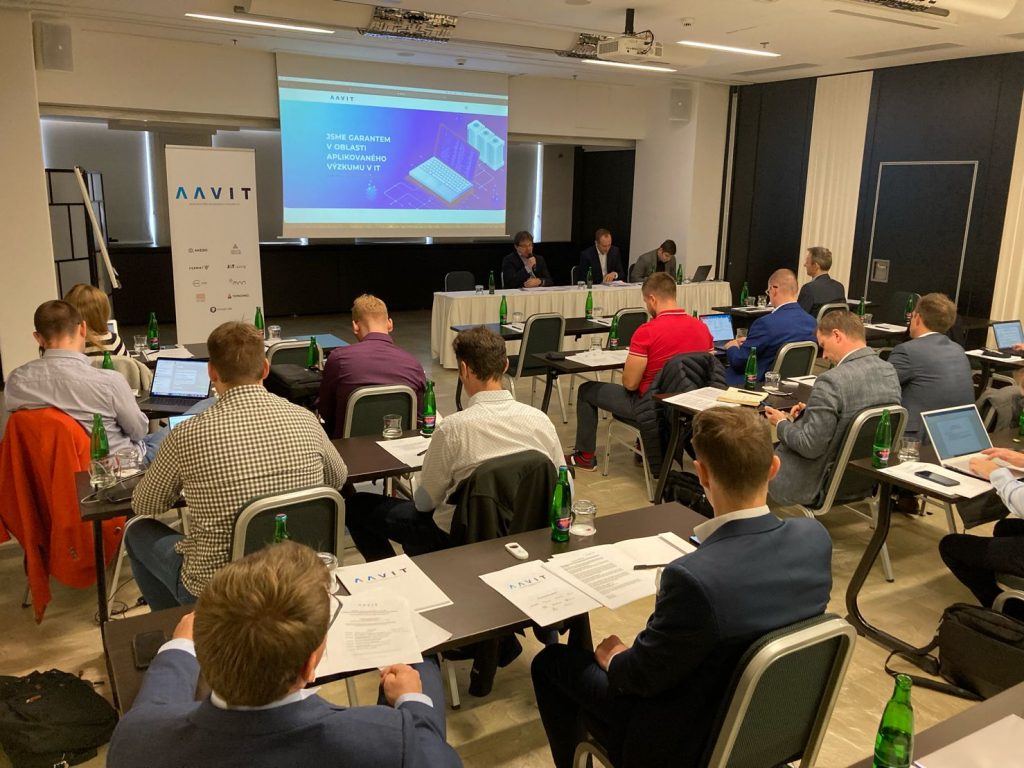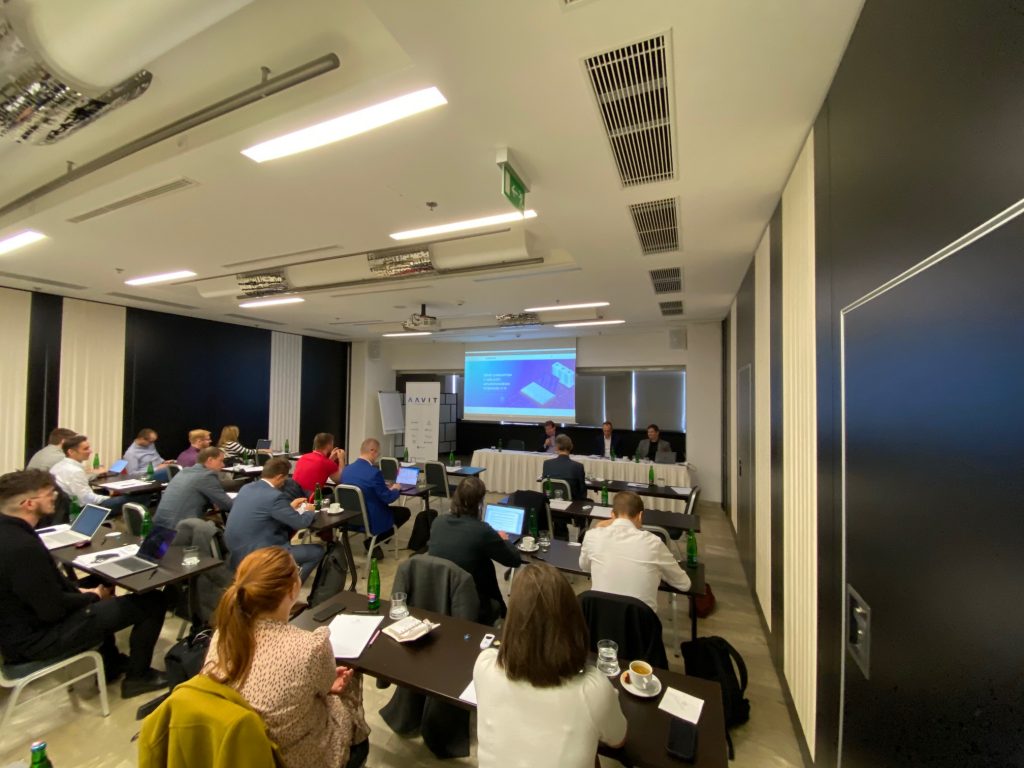
Workshop: Full 5G coverage by 2025
Workshop: Full 5G coverage by 2025
Autonomous vehicles, safer and more efficient rail transport, the first smart cities or communication between manufacturing machines. This is what 5G technology promises. However, only 30 % of the Czech republic is covered by 5G network. Yet, operators have the ambition to achieve full coverage by 2025. More planned activities in this area were revealed by speakers at our workshop, which took place on 19 October in Prague.

5G technology already in 5 Czech cities
Petr Očko and Petr Filipi, both from the Ministry of Industry and Trade, agreed on the need to intensively support the development and practical use of 5G networks.
“In recent years, we have provided a systematic framework for supporting the digital transformation of companies, thanks to the Digital Economy and Society concept or our 5G strategy. We have reflected this in the preparation of the support from the National Recovery Plan, which will support the complete ecosystem of digital transformation.
We have prepared three main components – the first to support the development of digital infrastructure, the second to support new innovative solutions, especially from small companies and startups, and the third to support the introduction of concrete solutions into practice, i.e. into companies. However, we are already implementing many projects today, for example the 5G for 5 cities project, which primarily supports smart cities, but also involves many innovative companies.”
said Petr Očko, Deputy of the MIT’s Digitisation and Innovation Section.
“From the National Recovery Plan, we have allocated CZK 2.8 billion to support high-speed internet coverage in places where the transmission speed of 100 mbit/s is not achieved. In January 2021 we will publish a funding call for this,” revealed Petr Filipi, Director of the Department of Digitization and Internet of the Ministry of Industry and Trade.
However, the support that will be allocated for the deployment and subsequent use of 5G networks is not exclusively from the National Recovery Plan. There are programs such as Digitální podnik or OPTAK (only in Czech), where billions of money can be provided.
“By the end of 2025 we want to digitalize at least 377 enterprises, the amount of support will be 4 billion CZK. We can support businesses in Prague in a de-minimis mode, education will also be supported,” Filipi added.
The government’s 5G strategy also envisions a more efficient railway
The government has developed its own 5G strategy, which was approved in January 2020. In addition to the action plan, it defines the characteristics of 5G networks and their application.
“Availability always and everywhere and in the required quality, high transmission speed, low response, massive communication between devices, a large number of connected devices per square kilometre,” Petr Vitek, secretary of the 5G Alliance, outlined the goals.
He sees applications in industry and automated transport, whether passenger or commercial, and in the streamlining of rail transport, where more capacity will be used on existing railways thanks to trains communicating with each other all the time.
“However, this requires building robust 5G corridors so that there is no loss of signal along the way,” Vitek pointed out. One such corridor is being built under the aegis of the 5G Alliance between Prague and Munich.
In addition to smart cities, here comes smart bridges
Consumers will especially benefit from 5G networks through faster internet connections, which will be available in the vast majority of the territory. “Operators currently cover between 10% and 35% of the population with 5G networks. By the end of 2025, we can expect nationwide coverage,” said Jiri Grund, executive director of the Association of Mobile Network Operators (APMS).
Equally interesting is the application in the industrial sector, where 5G networks will allow real-time communication between devices, thanks to fast response times ranging from 1 to 5 ms. Among specific applications, smart bridges were also mentioned. Smart bridges enable constantly collect and evaluate traffic data thanks to sensors, detectors and regular checks by drones. Other applications mentioned included use in smart cities, smart homes, IoT, artificial intelligence or virtual reality.

5G is also applicable in agriculture
Companies don’t have to wait until 2025 for 5G networks. “Operators are already offering two different solutions today. The first is the so-called campus network, where is possible to have built your own coverage. This is particularly suited to manufacturing companies with a specific hall. If it’s a business that operates outside of an enclosed space – like agriculture, for example, where you need to use 5G technology to evaluate the growth of crops, drone overflights for video streaming purposes – then we’re talking about so-called network slicing. In this case, the operator “slicks off” parts of the public network for the needs of a specific customer. Both options are already possible and I recommend companies to contact their 5G technology providers,” added Jiří Grund.
Vodafone’s representative, Jan Lazar, confirmed his words, “Vodafone has 35% of the population covered by the 5G network. We are working together on campus network solutions as well as the 5G for 5 cities project.”
Already in practice
For example, Tomáš Buřival from FERMAT.CZ pointed out that their customers are already using virtual reality on a regular basis: “We are a manufacturing company and our customers pay hundreds of thousands of euros for our machines. Today, customers no longer want to travel halfway around the world, but they still want to see the product they are buying in detail. Virtual reality serves us perfectly for this purpose, when we present the product to them in detail through 3D glasses,” said Buřival.
Leoš Kubíček from Virtual Lab also demonstrated how virtual reality through 3D glasses works. One of the last presentations by Richard Galovič from Chytrý box was a demonstration of smart boxes. Smart boxes are great examples of how 5G networks save people time, for instance when receiving and sending their parcels.
“5G networks will give companies the opportunity to increase their productivity and efficiency. They will give people new options in transport, housing and entertainment. The era of autonomous transport or virtual reality is upon us. That is why I am very pleased that we are actively preparing for this era and that there is cooperation between the state, operators, independent associations and companies themselves,” concluded Jaromír Hanzal, AAVIT’s chairman.


